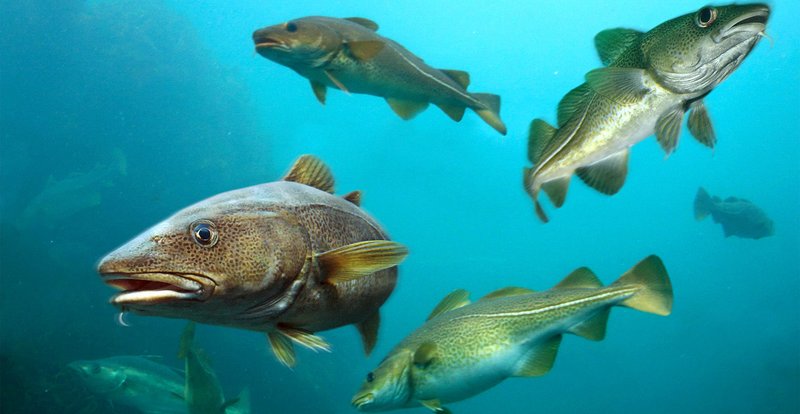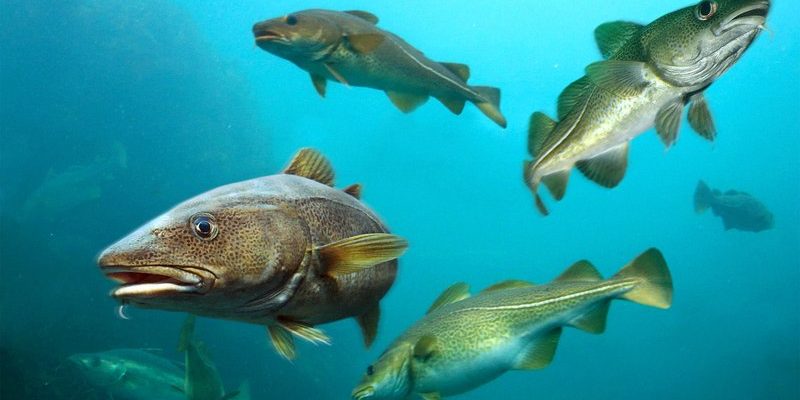
Cod are primarily found in cold waters, thriving in specific oceanic habitats. They’re not just fine diners; they’re travelers, swimming across vast distances. Let’s dive into the diverse habitats where you’ll find cod, from ocean depths to river systems, exploring what makes these places perfect for them.
Understanding Cod Species
Cod is a common name that refers to several species, primarily Atlantic cod and Pacific cod. These species inhabit different regions but share some common preferences. For example, Atlantic cod love the cooler waters of the North Atlantic, while Pacific cod can be found in the Bering Sea and the northern Pacific Ocean. You might be wondering what makes these regions so appealing for cod. Well, let me explain!
Atlantic cod, known for their tasty, flaky meat, prefer deeper waters and can often be found around continental shelves. They thrive in temperatures ranging from 2 to 10 degrees Celsius (36 to 50 degrees Fahrenheit). Think of the continental shelf as their cozy little home, providing ample food and protection.
Meanwhile, Pacific cod can adapt to various habitats, ranging from shallow coastal areas to deeper waters up to 600 meters (about 2,000 feet). This adaptability helps them evade predators and find food sources like shrimp, crabs, and smaller fish. The flexibility of their habitat makes them a resilient species.
Cod in the Oceans
The ocean is undeniably the heart of cod habitats. Specifically, these fish are predominantly found in the North Atlantic and North Pacific Oceans. Here’s a closer look at both locations:
- North Atlantic Ocean: Here, Atlantic cod thrives in countries like Canada, Norway, and the United States. They often gather in large schools, making them easier to spot for fishermen.
- North Pacific Ocean: Pacific cod is common from Alaska down to California. They prefer cooler waters and are often found near the ocean floor, hiding out in rocky crevices.
Both of these oceans provide unique ecosystems, rich in marine life that serves as food for cod. The cold, nutrient-rich waters create a flourishing environment for the various organisms cod feed on, making it an ideal habitat.
Coastal Habitats and Spawning Areas
Coastal waters are essential for cod, especially during their spawning seasons. These areas provide the right conditions for cod to reproduce and ensure the survival of future generations.
During spawning, cod venture closer to shore, often in shallow waters. This behavior is crucial for their eggs, which need specific environmental conditions to thrive. The eggs typically drift with the currents, hatching into larvae that eventually find their way back to deeper waters as they mature.
You might be curious about why they choose coastal areas. These locations are usually warmer and provide abundant food sources, making them conducive for young cod to grow and develop. The balance of warmth and nutrients is like a buffet for them!
Rivers and Estuaries: A Surprising Habitat
Surprisingly, some species of cod can also be found in rivers and estuaries. This is especially true for young cod who might venture into these freshwater environments. They often do this for feeding and shelter.
Estuaries, where freshwater mixes with saltwater, provide vital nutrients and a rich food supply. The shallow waters are teeming with life, from tiny invertebrates to larger fish. These areas serve as essential nurseries for young cod, allowing them to grow before heading out to deeper waters.
It’s fascinating to think about how these fish can adapt to different environments, isn’t it? Young cod might spend time in estuaries during their early life stages, but as they grow, they’ll migrate back to the ocean, seeking deeper waters.
Climate Influence on Cod Distribution
Climate plays a significant role in where cod are found. Changes in temperature and ocean currents can have a big impact on their habitats. For instance, warming waters can drive cod to migrate toward cooler areas.
In recent years, scientists have noticed shifts in cod populations due to climate change. Areas that used to be prime cod habitats are no longer as hospitable. That’s bad news not just for cod enthusiasts but also for the fishing communities that rely on these fish.
You might think about the ripple effect this has on ecosystems and fishing industries. As cod move northward due to warmer waters, other species might fill the gaps they leave behind, changing the entire marine landscape.
Conservation and Sustainable Practices
Given the changes in cod habitats, conservation efforts are becoming increasingly important. Sustainable fishing practices aim to ensure cod populations remain healthy, benefiting both the environment and the economy.
Fishing regulations, like size limits and seasonal closures, help protect spawning stocks. Many countries are now implementing measures to reduce overfishing and restore populations to sustainable levels. It’s a delicate balance, and everyone has a role to play.
If you’re a seafood lover, supporting sustainable seafood practices can make a difference. Look for certifications or labels that indicate the fish you buy comes from responsible sources. Every little effort counts toward preserving our beloved cod and their habitats.
Final Thoughts on Cod Habitats
In summary, cod are found in a variety of habitats, from the cold depths of the ocean to coastal areas and even rivers. Their adaptability helps them thrive in different environments, but they face challenges, especially with changing climates and overfishing.
Understanding where cod are found and how they live is crucial for promoting conservation efforts. By learning more about these fascinating fish, we can work together to ensure they continue to thrive in our oceans and rivers for generations to come.
So, next time you enjoy a delicious fish dish, remember the incredible journey these fish make through their diverse habitats!

